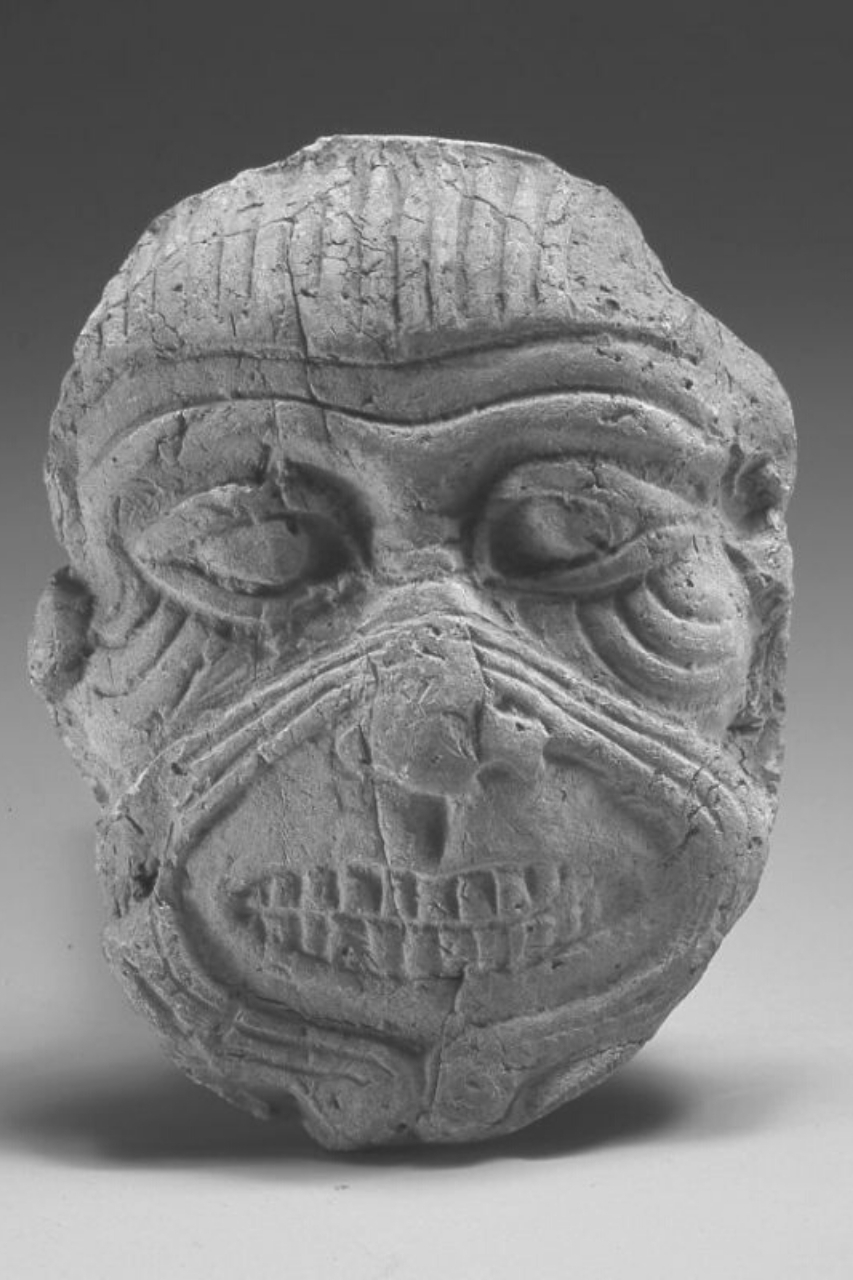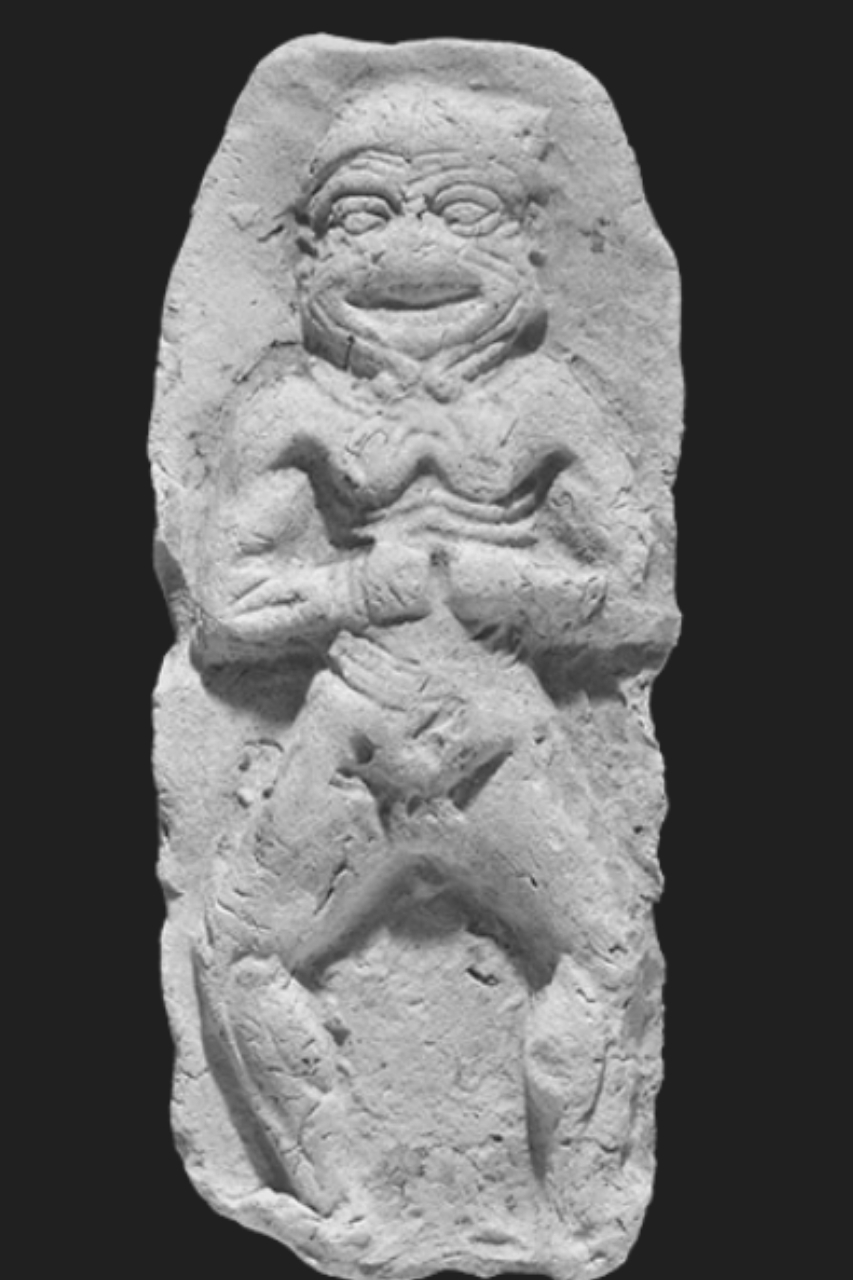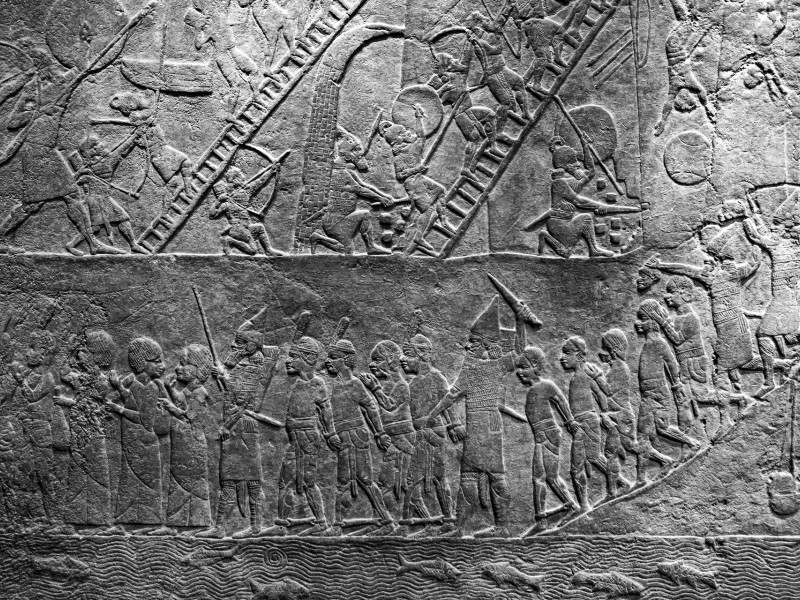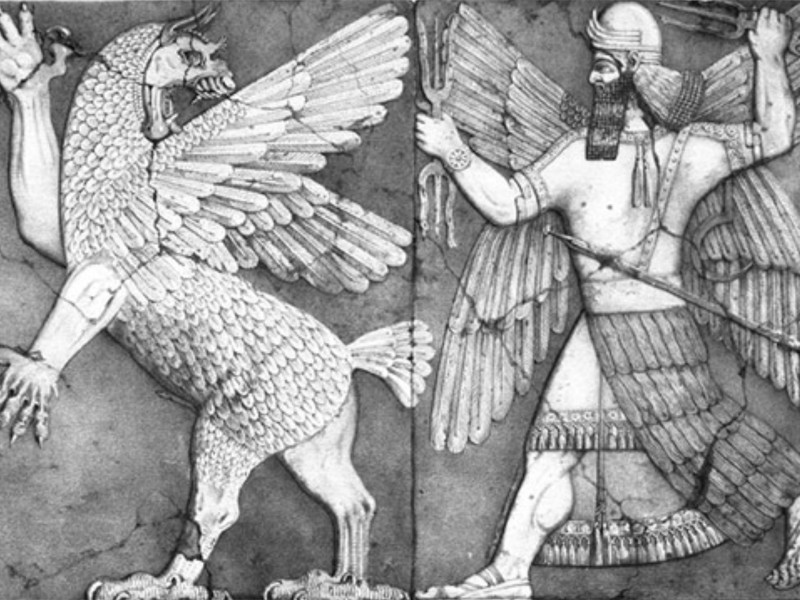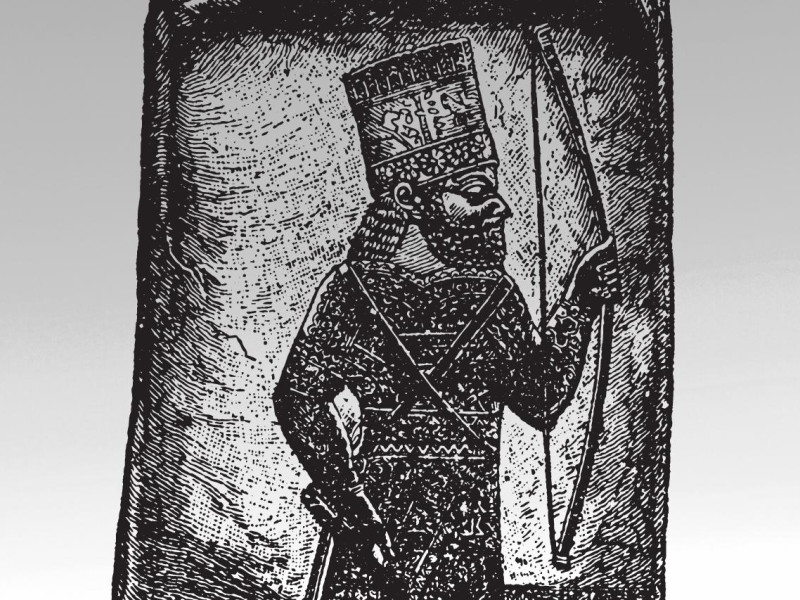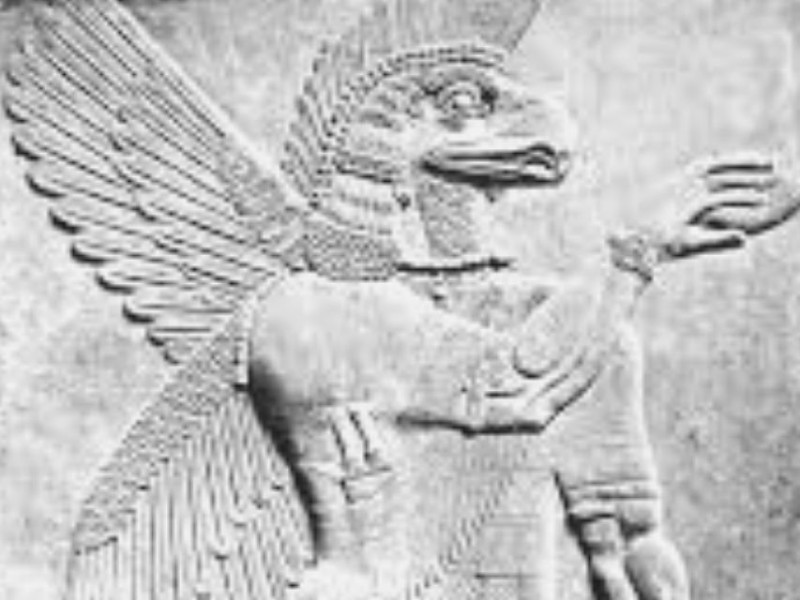Humbaba: The Forgotten Rise and Fall of a Gargantuan Beast
Humbaba is a mythological monster, armed with an enormous and terrifying body. The Assyrians used the denomination Humbaba, while the Sumerians in Akkadian mythology called him Huwawa.
His story began with his appointment as a dread to human beings and the keeper of the Cedar Forest, the dwelling place of gods, by god Enlil. You know that his adventure is incomplete without acknowledging his brothers, Pazuzu and Enki, together with Hanbi, his father.
Who Is Humbaba?
Humbaba’s depictions paint him as an ogre, a behemoth, or a chimera, among other things. According to ancient reports, he was a frightening beast that had already murdered several humans and mastered the art of human communication.
To sum up his activities, humans conceived him as a perpetrator of evil and demonic schemes who should be apprehended. However, nobody dared to do it. In reality, no one even attempted to enter his realm.
In this scenario of fear came our heroes from the city of Uruk in Sumer, Gilgamesh and Enkidu, who vowed to end the evil works of Humbaba. Enkidu provided further information, stating that he met Humbaba while dwelling among the animals in the wild.
According to Enkidu, Humbaba’s breath resembles a flame, his jaws are like death, his hearing is perfect, and his body never needs to sleep. Finally, terror overcomes all of Humbaba’s adversaries. When confronted by Humbaba, one must show his greatest strength against a horrible beast. How can you imagine defeating this colossal and unimaginable monster?
To describe him further, others have mentioned his face resembling a lion because he gives a cadaverous look that nobody could bear. You wouldn’t like to meet him because his mouth is similar to a fire-belching dragon.
You can see his face projecting terror with lines of human intestines, such that he was called the Keeper of the Fortress of Intestines. Humbaba has made himself the most abominable monster to fear.
Humbaba’s Description
Aside from his horrible appearance, Humbaba presents himself with the paws of a lion, a scaly body with thorns, and feet designed with claws of a vulture. He also possesses the horns of a wild bull on his head. In addition to his bizarre body, he is also depicted with a tail and a phallus with a snake’s head on their ends.
Not everything is bad about him, though. You must know other descriptions of Humbaba as that of a creature that leaves a track wherever he goes. Whenever he is walking in the forest, the birds sing together with the monkeys, as if they’re excited to meet him. This is quite positive compared with the usual gruesome image associated with him.
Gilgamesh and His Dreadful Plan
On the other hand, when Gilgamesh heard of this scourge, he stood up and announced to his people that he resolved to go to Cedar Forest, the place occupied by Humbaba, to cut down the cedar trees. King Gilgamesh expected his men to shout for joy and pride, but the entire hall went quiet upon hearing his announcement.
Instead of joy, the elders were filled with fear and warned Gilgamesh to think twice before proceeding with his unwarranted plan. They assured him that nobody should undermine the strength and cruelty of Humbaba, the evil monster.
In short, the elders rejected the king’s plan, knowing that Humbaba was a formidable foe, particularly to strangers in his abode. As a brave soldier, Gilgamesh could not be discouraged by anything, not even by the colossal monsters that everyone was talking about. He wanted to uplift his pride and stop the evil deeds of Humbaba.
The Plan To Kill Humbaba Has Begun
The epic of Gilgamesh and Enkidu started on their quest to find Humbaba, the forest’s protector. Filled with courage and pride, Gilgamesh was compelled to confront Humbaba and reclaim the woodland that Humbaba had conquered.
To do this, he needed to whisper a fervent prayer to the god of the sun, Shamash or Utu. With this desire to earn Shamash’s permission for the adventure he was about to embark on with Enkidu, Gilgamesh uttered his supplication without delay.
True to his words, Gilgamesh and Enkidu devised a plan to bring home a triumph despite everyone’s fear and disapproval.
The brave warrior, Gilgamesh, commissioned a blacksmith to make him and Enkidu the strongest armor they could use for their battle. You knew that once the prayer was accepted, they would embark on a horrendous fight beyond their imagination. Enkidu led the way to the realm of Humbaba when they left with their armament and reinforcement.
Gilgamesh’s Dreams
Courageous as they were, Gilgamesh and Enkidu began their massive mission to face Humbaba. Their trek took them six days to accomplish, but for regular humans, it would have taken many weeks. As they got closer to Humbaba’s abode, Gilgamesh began to have terrible dreams. Gilgamesh would wake up in the middle of the night, terrified by his nightly dreams.
Enkidu would also discuss the meaning of these dreams every morning. In his first nightmare, the king dreamt that he would get crushed by a mountain. The mountain undoubtedly represented Humbaba, and the nightmare symbolized Gilgamesh’s fear of defeat.
Gilgamesh’s nightmares continued. In one instance, he was saved by a young guy with the ability to emit light, which made his nightmares less terrifying. Enkidu introduced the young guy as Utu, the sun deity. He added that Utu would come to their help when they faced Humbaba.
Requesting the Help of Utu Against Humbaba
As a result, Gilgamesh and Enkidu resolved to make many sacrifices to Utu to gain his favor and enlist his help in their mission. Such nightmares could have made any other warriors withdraw from their plan, but you would be in awe of their valor and tenacity to fight despite any fair warning in the dreams.
Shamash or Utu, the sun god, despised Humbaba because he is linked with darkness and wickedness. Gilgamesh and Enkidu weren’t only interested in promoting their names to eliminate their mortal enemy. They were doing a god’s job by attempting to slay Humbaba, although this was directly contrary to the goals of god Enlil.
The story of Humbaba was initially acknowledged in the Epic of Gilgamesh. When Gilgamesh and Enkidu became friends, you know that they embarked on an expedition to the Cedar Forest to defeat Humbaba.
Gilgamesh swore to travel forth into the mountains to build his reputation, as a normal man could not advance beyond without losing his life. The battle with Humbaba would likely be the ultimate act of a man, considering the colossal size of Humbaba and the amount of fear he projected before humanity.
Humbaba’s Death
Gilgamesh enticed the monster to part up to his seven auras by presenting his sisters as wives and concubines. Gilgamesh delivered a frantic plea to Shamash or Utu amid the fight. When Shamash heard him, he sent 13 storms at Humbaba. Under the heavenly onslaught, Humbaba staggered, and Gilgamesh eventually overtook him.
However, Humbaba begged for compassion, claiming that he was aware that Gilgamesh was Ninsun’s son. He promised Gilgamesh that if he was spared, he would serve him. Gilgamesh thought it was a kind gesture at first, but Enkidu was cruel. Gilgamesh was urged by Enkidu to put a stop to the monster as soon as possible.
Humbaba made one final attempt to flee but was beheaded by Enkidu. Then, his head was placed in a leather sack and given to Enlil, the deity who appointed Humbaba as the forest’s protector.
The head of Humbaba was a sure sign of his defeat, after the many years of reign as the most terrifying monster in Mesopotamian mythology. You could not fathom the joy of succeeding in such a mission.
The Moral Behind Humbaba’s Legend
This classical epic of Gilgamesh and Humbaba is a narration of a warrior’s gallantness and his foe’s formidable strength. Its moral lesson reflects the heroism of Gilgamesh and his comrade, Enkidu. You are a witness to this momentous event in the history of man, but you must know how the gods agreed to offer their understanding.
After years and years of terror, Humbaba was dead. But before he died, Humbaba cursed Enkidu, saying, “Of you two, may Enkidu live the longest, may Enkidu find no rest in this world!” Enkidu fell ill and consequently died.
When god Enlil learned about this, he became furious and scattered Humbaba’s seven splendors or auras everywhere. The head of Humbaba is a passage from Gilgamesh’s epic poem.
In approximately 2000 BC, a verse narrative was composed under the Mesopotamian Empire. Would you believe that it occurred over 4000 years ago? This poetry even predates the Bible’s King David. The interaction between Gilgamesh and Humbaba, the god’s slave, is the subject of this poetry.
It’s unclear if the murder of Humbaba was good or evil. Is it more likely that Gilgamesh slew a monster or a heavenly guardian? Regardless of the outcome, killing Humbaba was unquestionably a heroic deed, albeit morally questionable.
Gilgamesh and Enkidu returned to Uruk, where they would find prepared festivities in honor of their triumph. The curse of Humbaba, on the other hand, would come back to torment them for the rest of their lives.
Conclusion
Humbaba is an enormous monster presented in the classical epic portraying the heroism of Gilgamesh and his comrade, Enkidu. The story began when Humbaba, the Keeper of the Cedar Forest, caused much terror in the lives of the people as he was feared for his terrible appearance and cruelty.
Gilgamesh and Enkidu vowed to stop him from his abominable acts, so the two embarked on an expedition to hunt Humbaba in his fortress in the forest. It was a tall order for the two, but they were guided by the sun god, Shamash, whose power was enough to subdue the monster.
The story revealed a confrontation between Humbaba and Gilgamesh with Enkidu. They tried to bribe him to entice him, but he was clever to know their plan. Without wasting any moment, Gilgamesh seized him and cut off his head to be presented to Enlil, the god who commissioned him to guard the forest.
As the great keeper of the Cedar Forest, Humbaba was assigned to be a loyal keeper of the god’s abode, but he’s also associated with darkness and evil work. This epic unveils that evil won’t prevail in this world and that everyone, whether rich or poor, has his designated time for rise and fall.

